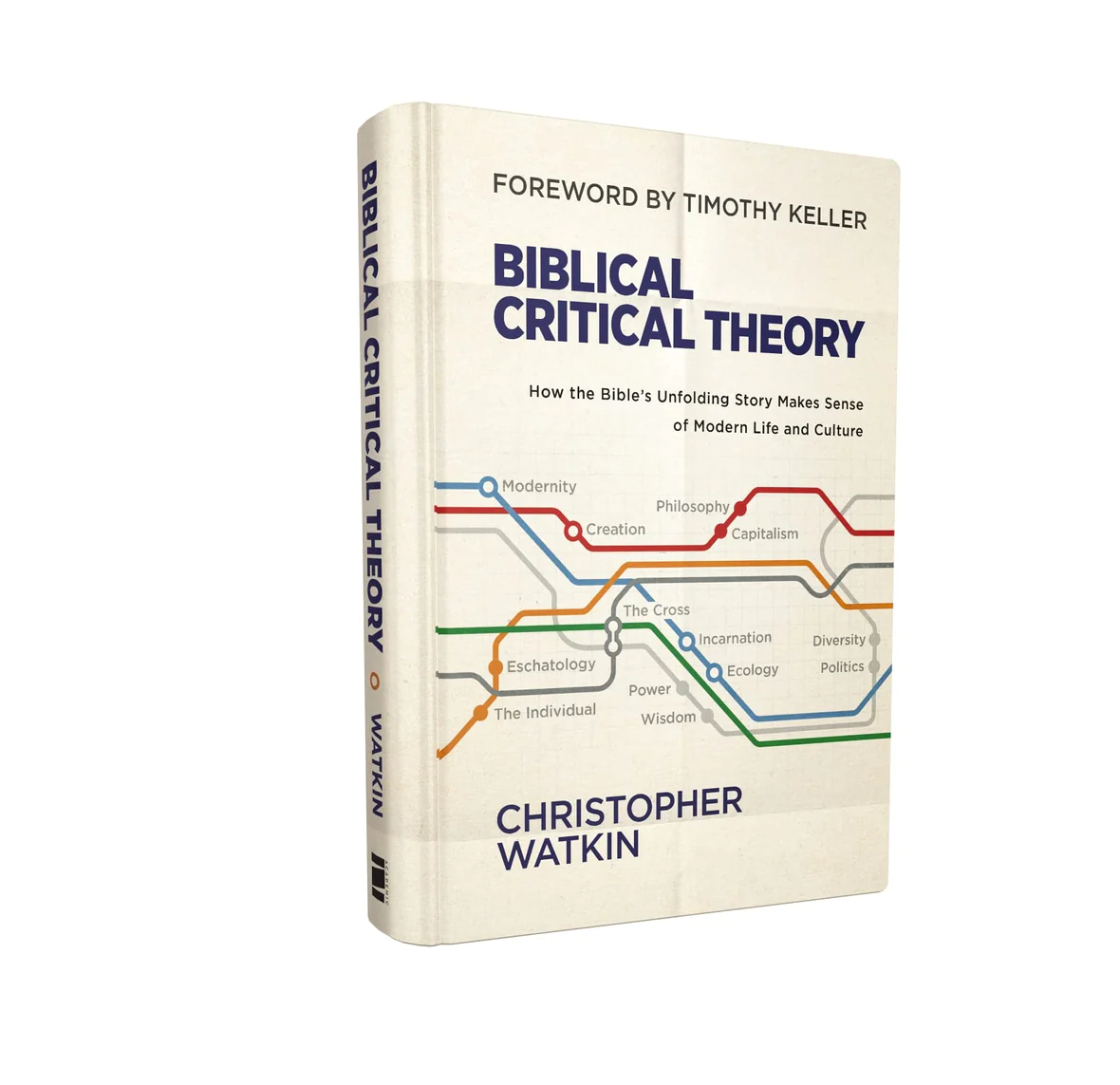The time of year is coming around again when we turn to look at the cross head-on. For many of us Good Friday will be not just a bonus bank holiday, but also a chance to reflect on and celebrate Jesus again as our Saviour.
Of course, Jesus impacts our lives and we strive to have every minute accounted under his lordship. But this Easter, let’s take a deeper look into how Jesus’ death on the cross affects our teaching more directly.
Christopher Watkin’s Book, Biblical Critical Theory, gives a broad and helpful look at culture through the lens of the Bible. In connecting the work of Christ on the cross into the culture we live and breathe in, Watkin can help us to see more of just what that first Good Friday means for every other day of our teaching year.
I’ve found five key areas that Watkin speaks on in his chapter, ‘The Cross, Subversion and Grace’, which are great reminders of the wonder of Jesus. Using some stonking quotations from the book and seeing the same truths in scripture, we can build a picture of the Great Hope we walk into school with every day.
1. Cross-Shaped Service
“The cross of Christ takes the ultimate symbol of Roman power and brutality, a symbol that met with disgust and was banned from polite conversation, and successfully re-codes it as an icon of love and service.” (p408)
The Roman Empire was a seriously powerful conquering and killing machine. Power was the aim of the game. Our attitude while teaching shouldn’t be driven by having power or sway over a class, and yet we are given authority and are required to wield it for the good of our students. This can be tricky when controlling a group is hard, sarcasm and cynicism put students back in their place or when blustering powerfully through a lesson, without much care, seems to make the day easier.
Consider how Paul describes Christ,
‘Who, being in very nature God,
did not consider equality with God something to be used to his own advantage;
rather, he made himself nothing by taking the very nature of a servant,
being made in human likeness.
And being found in appearance as a man,
he humbled himself
by becoming obedient to death – even death on a cross!’ Philippians 2:6-8
Jesus holds the ultimate power and authority yet we, like school children, push the boundaries and question his lordship. What is the answer? Jesus chose service. He humbled himself so that he could help us, not crush us.
While the Romans designed the cross to inflict the ultimate power play, Jesus uses his own power to turn it into service, through love, for us. This is so very valuable in a sector where our days are spent helping children who cannot repay us.
2. Cross-Shaped Power Play
“The power of this cycle of retribution is in remaking the injured in the image of the injurer. But Christ, when it is his turn to be injured, refuses to be remade and in doing so he ruptures the conformist, circular logic of retaliation and vengeance.” (p405)
In a world where systems worked on payment for wrongs, harsh punishments and fear of those in power, Christ completely bucks the trend. It has often been suggested that a bully is most likely someone who has been bullied themselves. Children can be seen most breaktimes wanting to rule the hopscotch, the football pitch or to take the lead in an imaginary game.
When used wrongly, power can destroy relationships and the injured can turn into injurers as they seek revenge, and to be more powerful than others they’ve received hurt from before. We don’t just see this in the playground but in the staffroom and in fact anywhere we humans go.
But when we cause offense to God by our sin, how does he respond?
‘Like the rest, we were by nature deserving of wrath. But because of his great love for us, God, who is rich in mercy, made us alive with Christ even when we were dead in transgressions – it is by grace you have been saved.’ Ephesians 2:3-5
We are those whose lives are bought, restored and remade, through Jesus’ death on the cross, by his grace and through his love. We don’t have to conform to the power-plays of the world anymore. And where it is our role to bring justice into the mini societies of our schools, we can follow God’s pattern of great love and astounding grace.
3. Cross-Shaped Abundance
‘It is also the rampant superabundance of the cross that separates it from the technical, n-shaped logic that governs most pagan sacrifices. Such sacrifice is a calculative transaction, a due recompense for services rendered and a down payment on future protection. It preserves the limits of property and represents the compensation due for altering the normal course of events; I put my coin in the slot by making the sacrifice, I pull the handle, and my reward appears in the tray. But in God’s economy the cross is a delimiting sacrifice, an infinite offering that bursts open every market paradigm of n-shaped tit-for-tat relationships with the divine.’ (pp407-408)
The ‘n-shape’ that Watkin refers to here represents all the acts of worship and payment that we humans might give to the Gods, the universe or anything else above us that might listen, in order to get what we want in return. It could be security, everlasting life or a particular need met. Not every non-Christian believes in a pagan God, but we all have a sense of wanting to get out what we put in.
How wonderful to know that we are not relying upon fate, the stars aligning, karma paying back or our own nouse and hard work! Success has been bought by Jesus at the cross and he, having made peace between us and God, sends us his abundant Spirit to live in and flow out of us.
On a given morning I might roll out of bed, grumbling at my alarm, reach the classroom and struggle not to grumble at the kids before me as I get my head around the tasks for the day. But God has everything I need in abundance. He has more peace, patience, power, joy and self-control. He answers the prayers of his children and he loves to step in and do our lives with us. The Jesus bought us this relationship at the cross – we don’t live in debt but abundance with Jesus.
‘Now to him who is able to do immeasurably more than all we ask or imagine, according to his power that is at work within us, to him be the glory in the church and in Christ Jesus throughout all generations, for ever and ever! Amen.’ Ephesians 3:20-21
4. Cross-Shaped Love
‘The figure of love engenders a long-term commitment to the beloved, fostering a relationship not of consumer and product but of one who, through and despite everything, will ceaselessly seek the best interests of the beloved… Agapē does not compete with other loves; it enables them.’ (p415)
Watkin didn’t intend to outline a teacher’s aim, but this quotation nails it pretty well. We’re in this profession because we want the best for the children in our care. This love and commitment is seen in almost every teacher we come across, even if it is hidden under a few layers of workload and life worries at times!
‘This is love: not that we loved God, but that he loved us and sent his Son as an atoning sacrifice for our sins.’ 1John4:10
A final joy of Jesus’s work on the cross is that this kind of love is already given to us. God doesn’t call us to create self-giving love out of our own limited resources. Instead, we receive it freely at calvary and again and again through the Spirit. This is our true fuel as Christian educators, and as Christians at all – to know the love of God and to let Him flow through us to the watching, waiting and hungry world.


